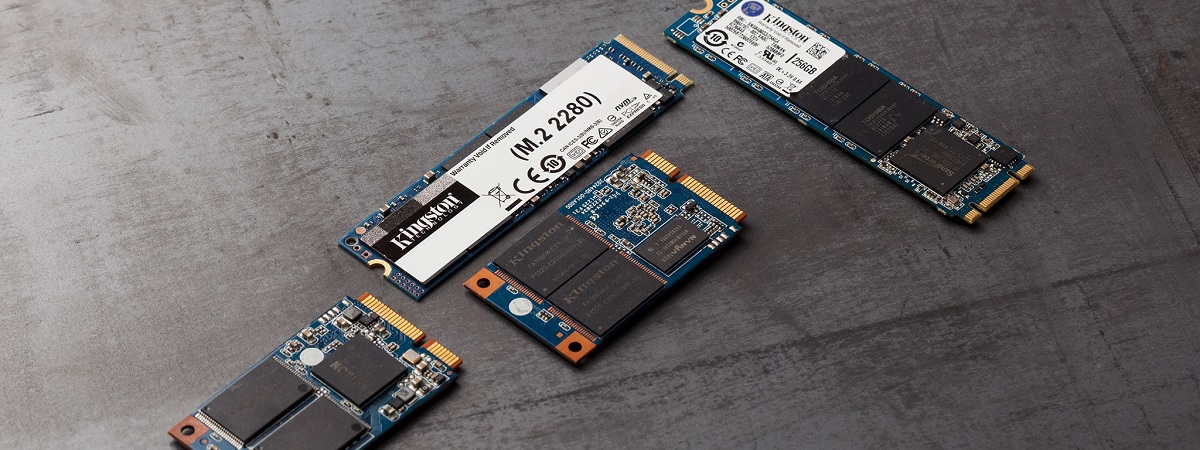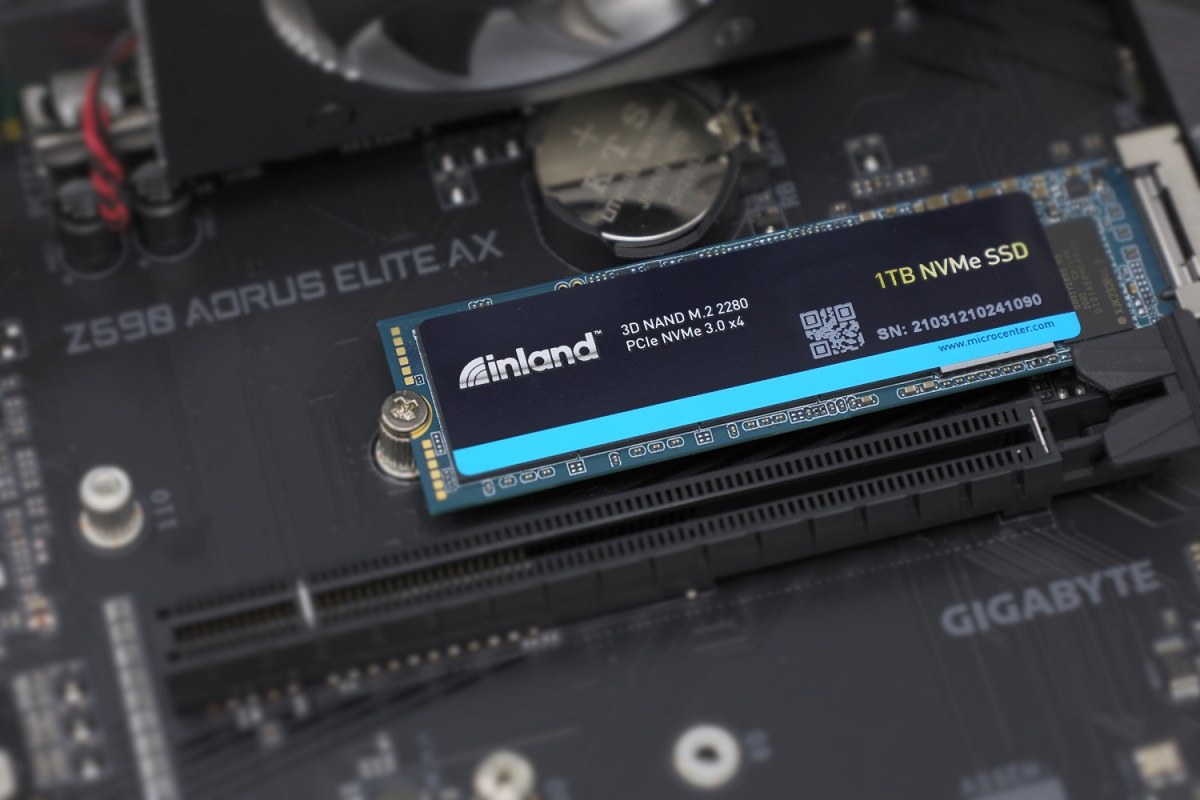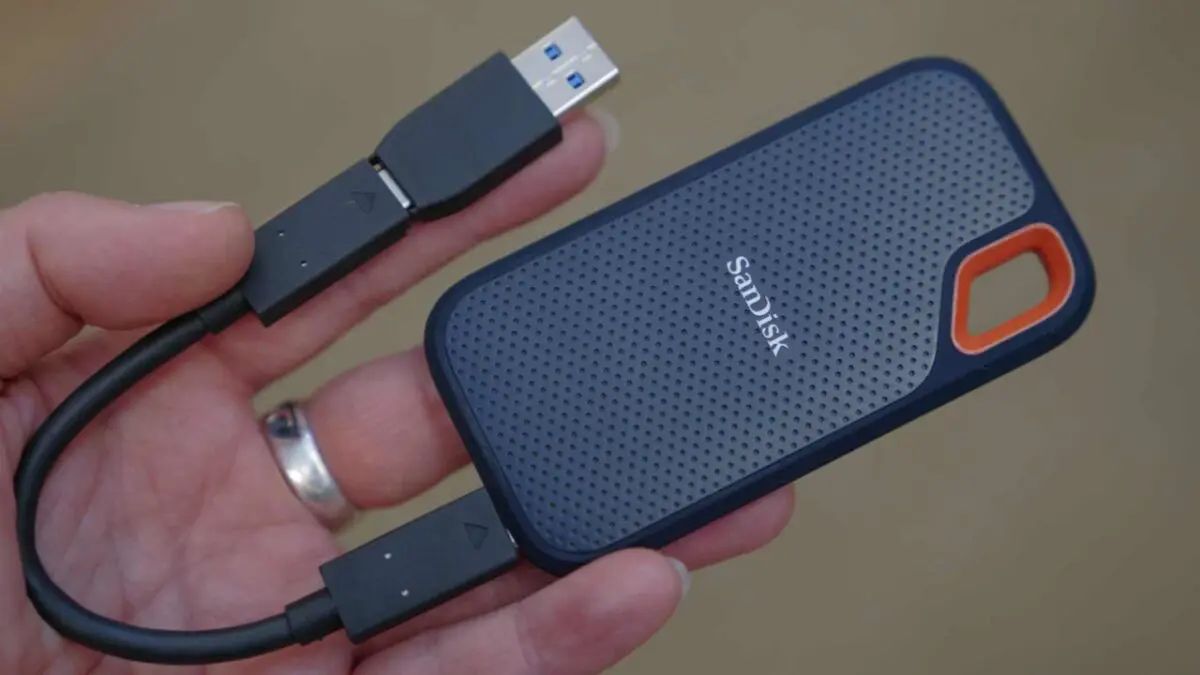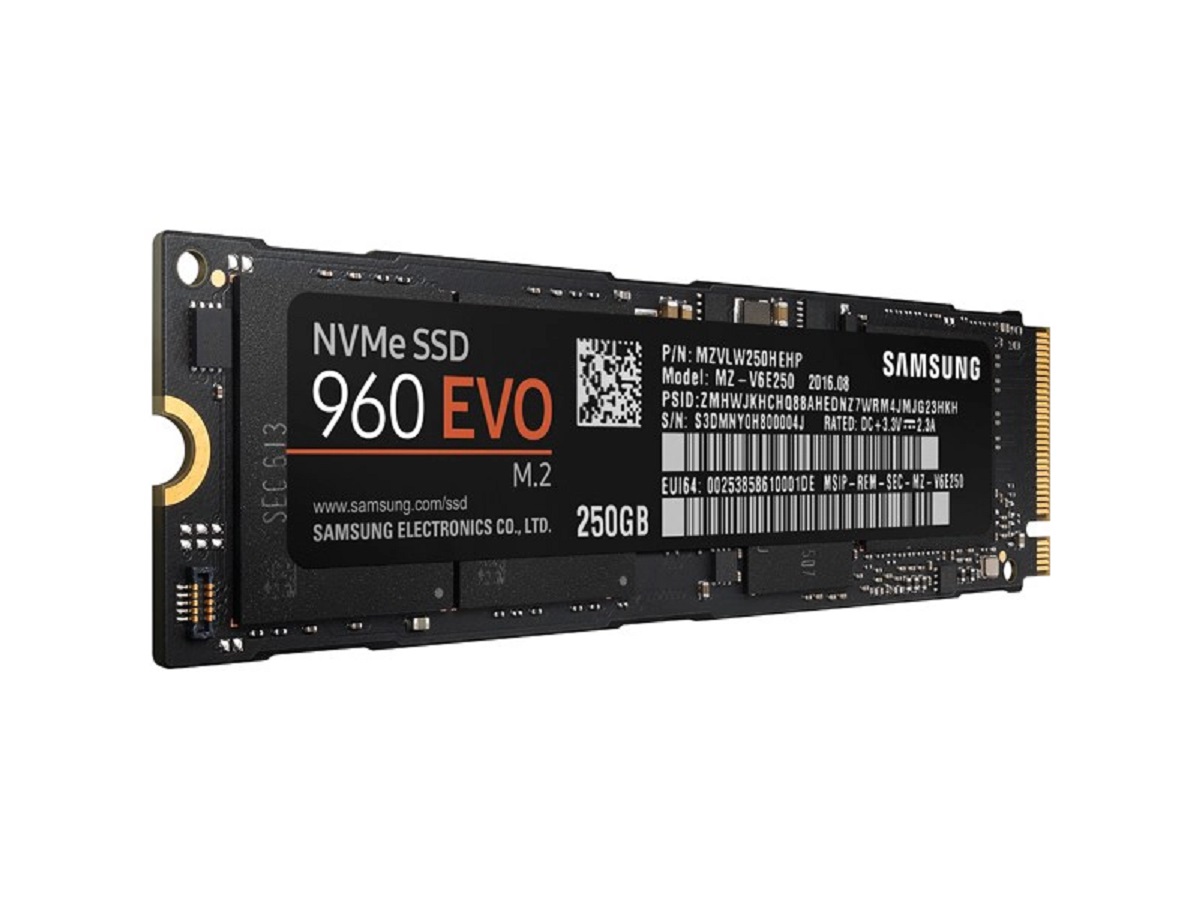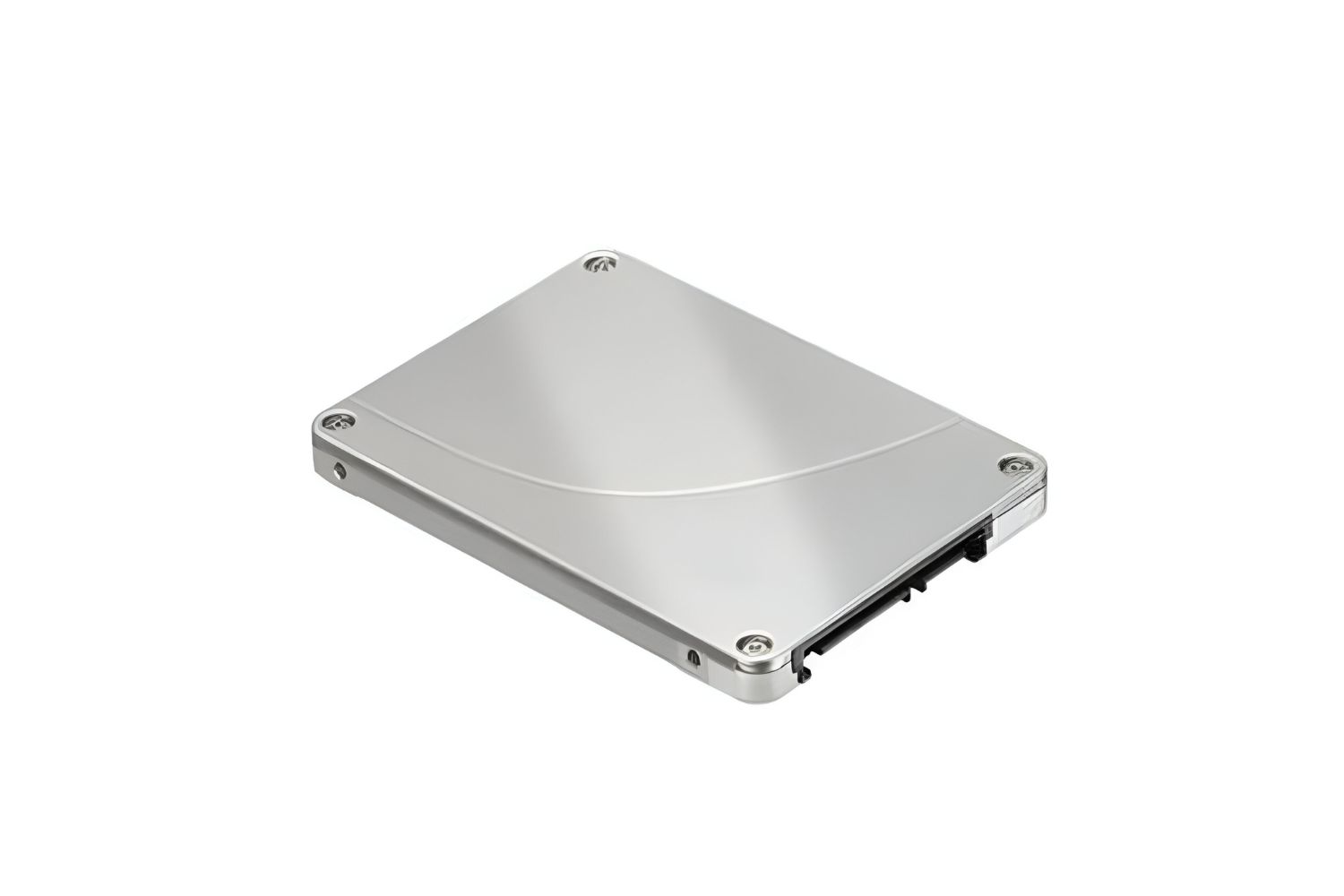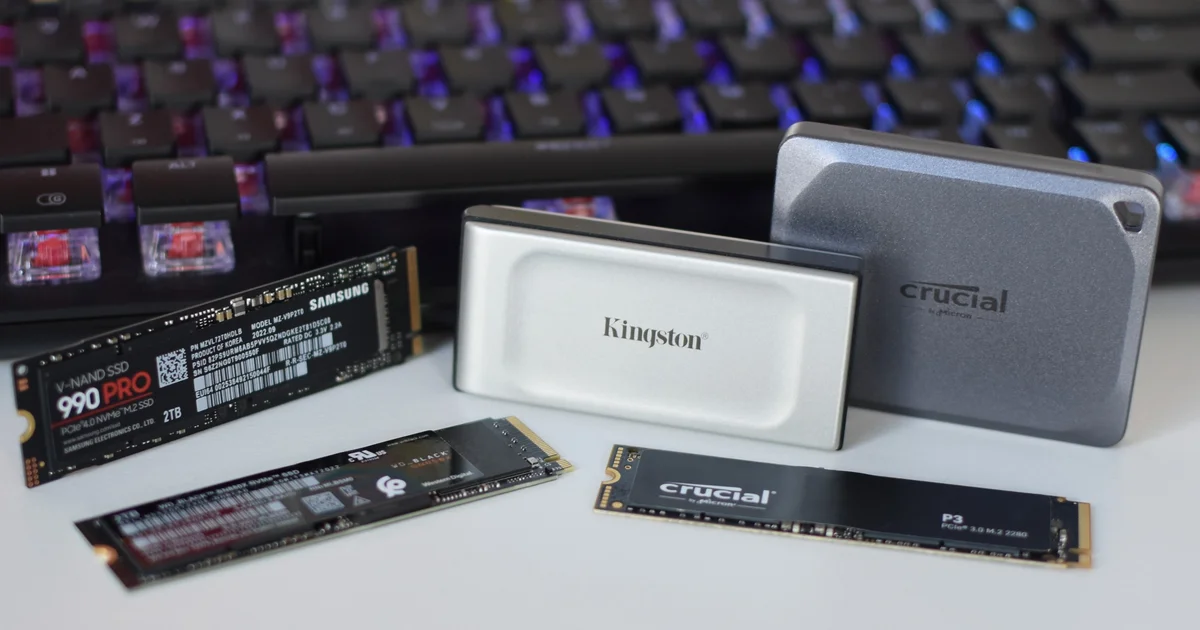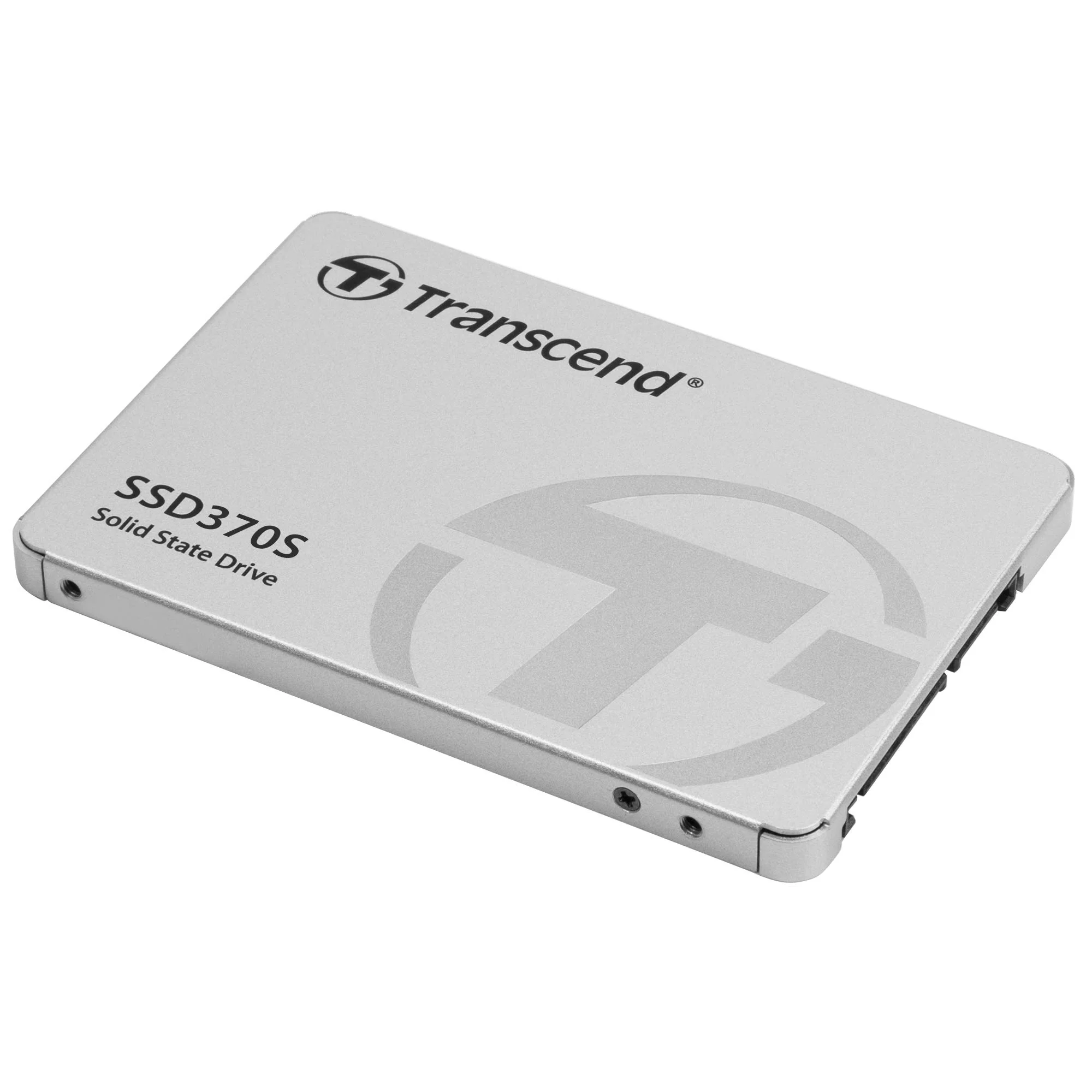Introduction
Welcome to our comprehensive guide on solid state drives (SSDs) and their lifespan. As technology advances, SSDs have become a popular choice for storage due to their speed, durability, and reliability. However, many users wonder how long an SSD can last before it reaches its end of life. In this article, we will delve into the intricacies of SSDs, explore the factors that affect their lifespan, and provide tips on extending their longevity.
SSDs are a type of storage device that use flash memory to store data, as opposed to traditional hard disk drives (HDDs) that use spinning disks. The absence of moving parts in SSDs makes them faster, more resistant to physical damage, and less prone to data loss. These advantages make SSDs ideal for various applications, including operating systems, gaming, and high-performance computing.
However, like all electronic devices, SSDs have a limited lifespan. While the exact lifespan varies depending on several factors, including usage patterns and environmental conditions, understanding how SSDs work and what impacts their lifespan can help you make informed decisions when it comes to purchasing and maintaining these devices.
In the following sections, we will explore the inner workings of SSDs, discuss the factors that influence their lifespan, and provide practical tips to maximize their longevity. By the end of this article, you will have a clear understanding of how long an SSD can last and how to make the most of it.
What is a Solid State Drive (SSD)?
A solid state drive (SSD) is a storage device that uses flash memory to store data. Unlike traditional hard disk drives (HDDs) that rely on spinning disks and magnetic storage, SSDs utilize integrated circuits to store and retrieve data quickly and efficiently.
SSDs are composed of NAND flash memory chips, which retain data even when the power is turned off. This non-volatile nature of flash memory gives SSDs an advantage over HDDs in terms of data resilience and energy efficiency.
The structure of an SSD consists of a controller, memory chips, and interface connectors. The controller manages data flow and performs functions such as error correction and wear leveling. The memory chips store the data, and the interface connectors allow the SSD to connect to a computer or other devices.
One of the key features of SSDs is their speed. Since there are no moving parts involved in the data retrieval process, SSDs can access data much faster than HDDs. This leads to quicker boot times, faster application loading, and improved overall system responsiveness.
Furthermore, SSDs are more resistant to physical shocks and vibrations compared to HDDs. This is because there are no mechanical components, such as spinning disks and read/write heads, that can be affected by external forces. As a result, SSDs are a popular choice for laptops, as they can withstand the rigors of everyday use and transportation.
Additionally, SSDs consume less power than HDDs, making them more energy-efficient. This not only helps to prolong battery life in portable devices but also reduces electricity costs in desktop systems.
Overall, solid state drives offer numerous advantages over traditional hard disk drives. They provide faster performance, improved durability, and energy efficiency. As technology continues to advance, SSDs are becoming more affordable and accessible, making them a popular choice for both personal and professional use.
How Does an SSD Work?
An SSD works by utilizing NAND flash memory cells to store and retrieve data. These cells are organized into pages and blocks, which make up the overall storage capacity of the drive.
When data is written to an SSD, the controller transfers the information into the memory cells by applying a voltage to the NAND flash. This voltage affects the charge level of the memory cells, which determines whether they hold a 0 or 1, representing binary data.
However, what sets SSDs apart from traditional HDDs is how they handle data retrieval. In an HDD, a mechanical arm with a read/write head has to physically move across spinning disks to access data. This results in slower read and write speeds compared to SSDs.
When data needs to be read from an SSD, the controller looks up the location of the data in the memory cells and retrieves it electronically. Since there are no moving parts involved, the access time is significantly faster, resulting in quicker data retrieval.
Another important aspect of SSDs is wear leveling. Flash memory has a limited number of write cycles before it degrades. To mitigate this, SSD controllers employ wear leveling algorithms, which evenly distribute write operations across all memory cells. By spreading out the write activities, wear leveling helps to prevent specific cells from wearing out faster than others, thus extending the lifespan of the SSD.
Additionally, SSDs often utilize over-provisioning, which allocates a portion of the drive’s capacity for background operations, including garbage collection and wear leveling. This helps to maintain the performance and longevity of the drive over time.
Overall, the operation of an SSD involves writing and reading data to and from NAND flash memory cells, without the need for any mechanical components. This leads to faster performance, reduced power consumption, and increased durability, making SSDs a superior choice for storage compared to HDDs.
Lifespan of an SSD
The lifespan of an SSD refers to the period of time it is expected to function optimally before it reaches its end of life. Unlike traditional hard disk drives (HDDs), SSDs do not have a fixed mechanical component that can fail over time. However, the lifespan of an SSD is influenced by several factors and is typically measured in terms of its endurance or total bytes written (TBW).
Endurance is a metric that refers to the total amount of data that can be written to an SSD before it begins to experience a decrease in performance or reach its maximum write capacity. SSDs have a finite number of program/erase cycles, which can vary depending on the type of NAND flash memory used. Generally, consumer-grade SSDs have endurance ratings ranging from 75 TBW to 150 TBW, while enterprise-grade SSDs can have much higher endurance ratings.
It is important to note that endurance ratings are estimates based on typical usage scenarios and may vary depending on individual use cases. Lighter workloads, such as web browsing and document editing, will have a minimal impact on an SSD’s lifespan, while heavy workloads, such as video editing and database operations, can significantly reduce its lifespan.
Data retention is another aspect of an SSD’s lifespan. While SSDs are designed to retain data for long periods, especially when powered off, the retention time can vary depending on factors such as temperature and the age of the drive. It is generally recommended to back up important data regularly and store it in multiple locations to mitigate the risk of data loss.
Manufacturer warranty is also an indicator of an SSD’s expected lifespan. Most SSD manufacturers provide warranties that cover a certain number of years or TBW, ensuring that the drive will function within specified parameters during that period. It is advisable to consider the manufacturer’s warranty when purchasing an SSD, as it can provide some assurance of the expected lifespan.
Overall, the lifespan of an SSD depends on various factors, including endurance, data retention, and manufacturer warranty. It is essential to evaluate your specific usage patterns and requirements to choose an SSD that aligns with your needs and expectations. With proper care and maintenance, an SSD can serve as a reliable and durable storage solution for many years.
Factors That Impact SSD Lifespan
Several factors can impact the lifespan of a solid state drive (SSD). Understanding these factors can help you maximize the longevity of your SSD and ensure optimal performance throughout its lifespan.
1. Write Endurance: Write endurance refers to the amount of data that can be written to an SSD without affecting its performance or reaching its maximum write capacity. SSDs have a finite number of program/erase cycles, which can vary depending on the type of NAND flash memory used. Heavy workloads and extensive data write operations can decrease an SSD’s lifespan, while lighter workloads will have a minimal impact.
2. Data Retention: SSDs are designed to retain data for long periods, especially when powered off. However, factors such as high temperatures and the age of the drive can affect data retention. Regularly backing up important data and storing it in multiple locations is recommended to mitigate the risk of data loss.
3. Usage Patterns: The usage patterns of an SSD can impact its lifespan. Intensive tasks such as video editing or running resource-intensive applications can put more strain on the SSD, potentially reducing its lifespan. Conversely, light usage, such as web browsing or document editing, will have minimal impact on the SSD’s lifespan.
4. Operating Temperature: High temperatures can adversely affect an SSD’s performance and lifespan. It is important to ensure proper cooling and airflow to prevent overheating. Operating within the recommended temperature range specified by the manufacturer will help maintain the longevity of the SSD.
5. Power Loss Protection: Power loss during data write operations can lead to data corruption or loss. SSDs equipped with power loss protection features help prevent this by ensuring that data in transit is safely written to the drive even in the event of a sudden power loss. This can help maintain data integrity and extend the lifespan of the SSD.
6. Firmware Updates: SSD manufacturers often release firmware updates that can improve the drive’s performance, stability, and lifespan. Keeping the firmware up to date ensures that you benefit from any enhancements or bug fixes that can positively impact the SSD’s lifespan.
By considering these factors and adopting good practices such as maintaining proper cooling, avoiding excessive write operations, and backing up important data, you can extend the lifespan of your SSD and enjoy optimal performance over its lifetime.
Write Endurance
Write endurance is a crucial factor that affects the lifespan of a solid state drive (SSD). It refers to the number of program/erase (P/E) cycles that an SSD can endure before it starts to experience performance degradation or reaches its maximum write capacity.
Each memory cell in an SSD has a finite number of P/E cycles it can withstand. The exact number can vary depending on the type of NAND flash memory used in the SSD. Consumer-grade SSDs typically have endurance ratings ranging from 75 TBW (terabytes written) to 150 TBW, while enterprise-grade SSDs can have significantly higher endurance ratings.
Heavy workloads and extensive data write operations can shorten the lifespan of an SSD. This is because every time data is written to the SSD, it consumes a portion of the available P/E cycles. As the SSD approaches its endurance limit, the likelihood of encountering errors or failures increases.
However, it is important to note that most consumer workloads will not reach the endurance limits of an SSD during its typical lifespan. For example, if an SSD has an endurance rating of 150 TBW, it would take writing 50 GB of data every day for 8 years to reach that threshold.
Furthermore, modern SSDs feature wear leveling algorithms that distribute write operations evenly across all memory cells. This ensures that specific cells are not subject to excessive wear, thereby extending the overall lifespan of the SSD. When one memory block starts to reach its endurance limit, the SSD’s controller intelligently redirects data to less utilized blocks, maximizing the drive’s durability.
It is also worth noting that the actual lifespan of an SSD can vary depending on individual usage patterns. Lighter workloads, such as web browsing and document editing, will have minimal impact on the SSD’s lifespan, while heavier workloads involving tasks like video editing or running large databases can significantly reduce its longevity.
To monitor the health and remaining lifespan of an SSD, various tools and software are available that provide information on the amount of data written, the estimated endurance remaining, and other important metrics. These tools can be useful for planning storage upgrades or replacing SSDs nearing their endurance limits, ensuring data integrity and continuity.
In summary, write endurance is an essential factor in determining the lifespan of an SSD. While heavy workloads and extensive data writes can shorten an SSD’s lifespan, modern SSDs with wear leveling algorithms and high endurance ratings are designed to handle typical consumer workloads without issues. Monitoring SSD health and usage, along with implementing proper data management and backup strategies, can help optimize the lifespan and performance of your SSD for years to come.
Data Retention
Data retention is a critical aspect of an SSD’s lifespan and refers to the ability of the drive to maintain stored data for long periods, especially when the power is turned off. While SSDs are designed to retain data reliably, several factors can impact the retention time.
The first factor is temperature. High temperatures can accelerate the degradation of NAND flash memory cells, leading to a decrease in data retention capability. It’s important to ensure that SSDs are operated within the recommended temperature range specified by the manufacturer to maintain optimal data retention.
In addition to temperature, the age of the SSD can also affect data retention. As SSDs age, the voltage levels in the NAND flash memory cells naturally degrade, making it harder for the cells to maintain their stored data. While modern SSDs have advanced error correction mechanisms to mitigate this issue, it is still recommended to regularly back up important data in multiple locations to minimize the risk of data loss.
It’s worth noting that data retention on SSDs is typically far better than on traditional hard disk drives (HDDs). HDDs rely on magnetic storage, which can be susceptible to magnetic fields, temperature fluctuations, and mechanical damage. In contrast, SSDs store data in non-volatile memory cells, making them more resistant to physical shocks and environmental factors that could impact data retention.
To ensure the longevity and reliability of your data stored on an SSD, it is important to follow some best practices:
- Regularly back up your important data to separate storage devices or backup solutions.
- Periodically check the health and status of your SSD using manufacturer-provided tools or third-party software.
- Protect the SSD from extreme temperature conditions by maintaining proper ventilation and cooling.
- Avoid exposing the SSD to physical shocks or vibrations that could potentially damage the memory cells or impact data retention.
By following these practices and being proactive in data management and backup strategies, you can mitigate the risks associated with data retention on SSDs. Proactive measures also provide an opportunity to identify any potential issues early on and take appropriate actions to protect your valuable data.
Manufacturer Warranty
The manufacturer warranty is an important consideration when assessing the lifespan and durability of a solid state drive (SSD). It provides assurance regarding the expected performance and reliability of the SSD during a specified period of time. While the warranty alone does not determine the actual lifespan of an SSD, it serves as an indicator of the manufacturer’s confidence in their product.
SSD warranties typically cover a certain number of years or total bytes written (TBW). The TBW rating represents the total amount of data that can be written to the SSD before it reaches its specified endurance limit. The higher the TBW rating, the longer the SSD is expected to last under normal usage conditions.
Manufacturer warranties vary, and it is essential to understand the specific terms and conditions outlined in the warranty documentation. Some warranties may offer a replacement or repair of the SSD if it fails within the warranty period, while others may provide a prorated refund based on the remaining warranty duration.
It is important to note that the warranty covers typical usage scenarios and is not a guarantee against all types of failures or misuse. Manufacturers often outline specific exceptions or conditions that may void the warranty, such as improper installation, physical damage, or unauthorized modification of the SSD.
While warranties can provide peace of mind, it is also important to consider the reliability and reputation of the manufacturer. Established and reputable SSD manufacturers often have better quality control measures, advanced firmware, and more reliable components, which can contribute to a longer-lasting and more reliable SSD.
When considering an SSD purchase, it is beneficial to compare the warranty terms and conditions offered by different manufacturers. Look for warranties that provide generous coverage, higher TBW ratings, and reliable customer support. Additionally, it is helpful to read online reviews and gather feedback from other users to gauge the actual reliability and customer satisfaction associated with the SSD and its warranty.
Ultimately, while a manufacturer warranty does not directly dictate the lifespan of an SSD, it can serve as an indication of the product’s expected durability and the manufacturer’s commitment to customer satisfaction. By choosing an SSD with a reputable warranty and reliable support, you can have confidence in the longevity and performance of your storage solution.
How to Extend the Lifespan of an SSD
Maximizing the lifespan of a solid state drive (SSD) involves implementing good maintenance practices and adopting habits that minimize wear and tear on the drive. By following these tips, you can ensure that your SSD remains reliable and performs optimally for an extended period of time.
1. Maintain Adequate Free Space: SSDs require free space to perform wear leveling and garbage collection algorithms. Keeping at least 10-20% of the SSD’s total capacity free will help maintain performance and extend its lifespan.
2. Minimize Write Operations: Excessive write operations can wear out an SSD faster. Avoid unnecessary write-intensive tasks, such as continuously downloading and deleting large files, and be mindful of write-heavy applications.
3. Enable TRIM: TRIM is a feature that informs the SSD which data blocks are no longer in use, allowing the drive to optimize performance and improve longevity. Ensure that TRIM is enabled in your operating system for ongoing maintenance of the SSD.
4. Update Firmware: Regularly check for and apply firmware updates provided by the SSD manufacturer. Firmware updates often include performance optimizations and bug fixes that can enhance the lifespan and reliability of the SSD.
5. Avoid Rapid Temperature Fluctuations: Rapid temperature changes can stress the components of the SSD. Ensure that the SSD is in a well-ventilated and temperature-controlled environment to minimize temperature fluctuations and prevent overheating.
6. Use Power Protection: Power loss during write operations can lead to data corruption or loss. Consider using an uninterruptible power supply (UPS) or a backup power solution to protect the SSD against sudden power failures.
7. Regularly Back Up Your Data: While SSDs are reliable, data loss can still occur due to various factors. Regularly back up your important data to separate storage devices or cloud-based backup solutions to protect against unforeseen events.
8. Monitor Health and Performance: Use manufacturer-provided software or third-party tools to monitor the health and performance of your SSD. This allows you to identify any potential issues early on and take appropriate actions to prevent further damage.
9. Avoid Physical Impact: SSDs are more resilient to physical shocks than traditional hard drives, but excessive physical impact can still damage the drive. Handle the SSD with care and avoid dropping or subjecting it to unnecessary shock or vibration.
By following these guidelines, you can extend the lifespan of your SSD and ensure its ongoing performance and reliability. While SSDs do have a limited lifespan, implementing proper maintenance and care practices can help you get the most out of your investment.
Conclusion
Solid state drives (SSDs) offer significant advantages in terms of speed, durability, and reliability compared to traditional hard disk drives (HDDs). Understanding the lifespan of an SSD and taking steps to extend its longevity are essential for maximizing its performance and value.
In this article, we have explored various aspects related to SSD lifespan, including factors that impact its durability, such as write endurance and data retention. We have also discussed the importance of the manufacturer warranty, as well as provided tips on how to extend the lifespan of an SSD.
By considering the write endurance of an SSD and understanding how different workloads can impact its longevity, users can effectively manage their usage patterns and adopt practices that minimize unnecessary write operations. Being mindful of data retention factors, such as temperature and SSD age, helps ensure that stored data remains intact and accessible over time.
The manufacturer warranty serves as an indicator of the expected lifespan of an SSD and the trustworthiness of the manufacturer. Considering warranties with higher TBW ratings and reputable customer support can instill confidence in the reliability and performance of the SSD.
Furthermore, implementing good maintenance practices, such as maintaining adequate free space, enabling TRIM, and regularly updating firmware, can help optimize the performance and lifespan of an SSD. Monitoring the health of the SSD, protecting it from power loss, and avoiding physical impact contribute to its long-term reliability.
In conclusion, by understanding the factors that affect SSD lifespan and implementing appropriate measures, users can make informed decisions when purchasing, using, and maintaining their SSDs. With proper care and attention, an SSD can provide fast and reliable storage for personal, professional, and enterprise applications for many years to come.







